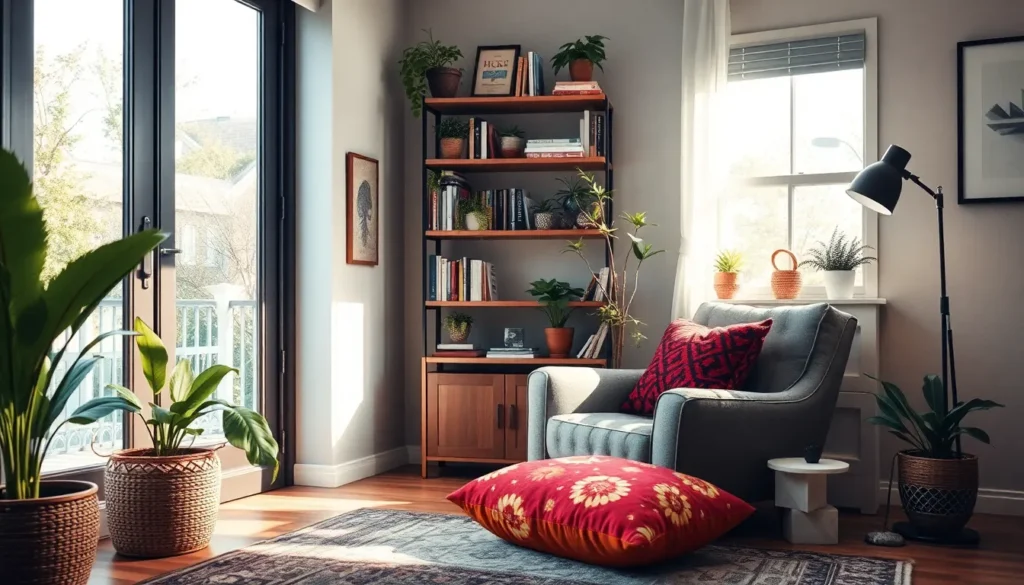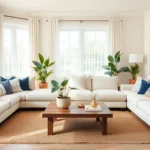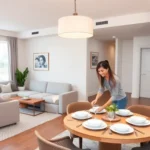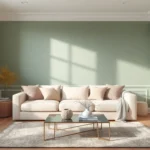Most of us have that one corner or area in our living room that’s just… there. Maybe it’s the awkward space behind the couch or that empty wall that’s been staring at us for months. We walk past these unused spots daily yet struggle to figure out what to do with them.
Wasted living room space is money left on the table. Every square foot of your home has potential to enhance your lifestyle and boost your property value. Whether you’re dealing with a small apartment or a spacious house these dead zones can transform into functional and beautiful areas that actually serve your family’s needs.
We’ve discovered dozens of creative answers that’ll help you maximize every inch of your living room. From cozy reading nooks to productive home offices these ideas will revolutionize how you think about your space and give you the inspiration you need to finally tackle those forgotten corners.
Create a Cozy Reading Nook in Your Corner Space
Transforming that awkward corner into a dedicated reading sanctuary instantly maximizes your unused living room space while creating a peaceful retreat for daily relaxation.
Choose Comfortable Seating Options
Armchairs with plush cushioning offer the perfect foundation for extended reading sessions in tight corner spaces. We recommend selecting chairs with high backs and supportive armrests to maintain proper posture during long literary adventures. Oversized floor cushions provide flexible seating that adapts to different reading positions while requiring minimal floor space.
Window seats built into corner areas maximize natural light exposure and create stunning focal points in previously dead zones. These custom answers often include built-in storage compartments underneath the seating surface. Bean bags filled with memory foam conform to your body shape and easily move around the corner space as needed.
Chaise lounges designed for corners allow you to stretch out completely while maintaining the cozy atmosphere essential for reading enjoyment. Small-scale versions fit perfectly in compact living room corners without overwhelming the surrounding area.
Add Proper Lighting for Reading
Floor lamps positioned behind your reading chair eliminate harsh shadows while providing focused illumination directly onto book pages. We suggest adjustable models with swing arms that move precisely where you need concentrated light. Table lamps placed on nearby side tables create ambient lighting that reduces eye strain during extended reading periods.
Wall-mounted sconces save valuable floor space in cramped corners while delivering targeted light exactly where your book rests. These fixtures often include dimmer switches for customizing brightness levels throughout different times of day. String lights draped around the corner area add warm atmospheric lighting that enhances the cozy reading environment.
Natural light streaming through nearby windows provides the healthiest illumination for reading during daytime hours. Position your seating to take advantage of consistent daylight without creating uncomfortable glare on reflective book pages.
Include Storage for Books and Magazines
Floating shelves mounted on corner walls display your book collection while keeping frequently read titles within easy reach. We recommend installing multiple shelf levels to accommodate books of various heights and sizes. Storage ottomans serve dual purposes by providing footrests during reading sessions and hiding magazines inside their compartments.
Corner bookcases designed specifically for angular spaces maximize vertical storage without protruding into walkways or seating areas. These specialized units often feature angled shelves that follow the natural corner contours perfectly. Basket storage placed beneath seating areas keeps current reading materials organized and easily accessible.
Magazine racks positioned beside your reading chair hold current issues and newspapers in an organized display that adds visual interest to the corner space. Rolling carts with multiple tiers allow you to move your entire book collection around the living room as needed.
Transform Empty Wall Areas Into Functional Storage

We’ve covered corner transformations, but your wall space holds incredible potential for smart storage answers that won’t sacrifice your living room’s style.
Install Floating Shelves for Display and Organization
Floating shelves maximize vertical wall space while creating elegant display areas for books, decorative items, and personal collectibles. We recommend installing them at varying heights to create visual interest and accommodate different sized items.
Strategic placement transforms bare walls into functional focal points. Position shelves above your sofa for art displays, near your entertainment center for media storage, or alongside windows to showcase plants and decorative pieces.
Multiple shelf configurations work for different needs. Single floating ledges hold picture frames and small decor, while grouped arrangements create library style book storage. Corner floating shelves use those tricky wall intersections perfectly.
Add Built-in Cabinets for Hidden Storage
Built-in cabinets maintain your room’s clean aesthetic while providing concealed storage for linens, toys, office supplies, and seasonal items. We suggest designing them to match your existing trim and wall colors for a seamless appearance.
Floor to ceiling installations maximize storage capacity without consuming valuable floor space. These custom answers can incorporate both open shelving sections and closed cabinet doors to balance display and hidden storage needs.
Strategic cabinet placement enhances room flow. Install them flanking your fireplace, along accent walls, or in alcoves to create built in entertainment centers that hide cables and electronics while displaying your favorite items.
Use Wall-Mounted Desks for Small Workspaces
Wall-mounted desks create dedicated work areas without sacrificing floor space in your living room. We recommend fold down designs that disappear when not in use, maintaining your room’s relaxed atmosphere.
Compact workspace answers fit various wall configurations. Choose narrow designs for tight spaces between windows, or wider versions that can accommodate laptops, reading materials, and desk accessories comfortably.
Positioning above existing furniture doubles functionality. Mount desks slightly higher than your sofa back to create laptop stations, or install them near built-in storage for an integrated home office zone within your living space.
Design a Multi-Purpose Home Office Zone
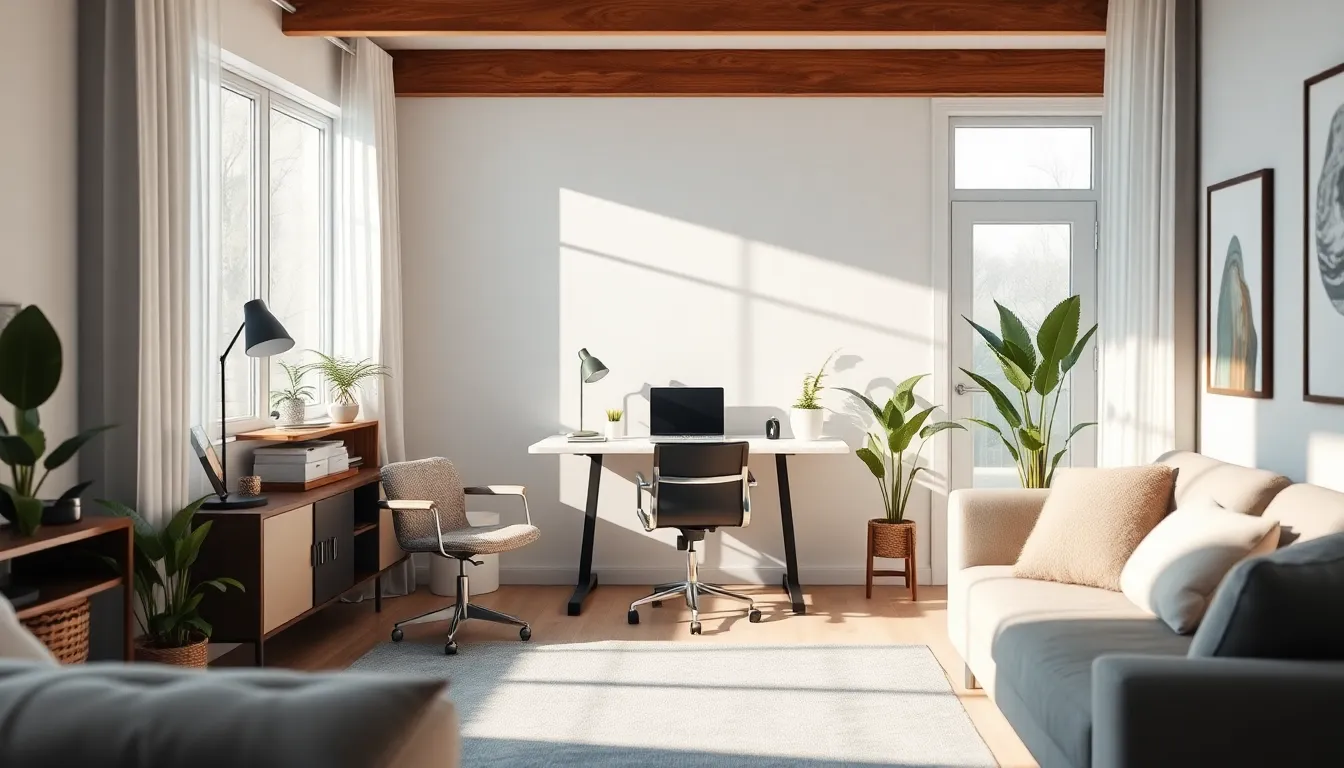
Converting unused living room areas into functional workspace zones offers incredible flexibility for modern remote work needs. We’ll transform underutilized corners and walls into productive environments that seamlessly blend with your home’s aesthetic.
Set Up a Compact Desk Area
Position compact desks strategically in corners or against walls to maximize available floor space while creating dedicated work zones. Corner placement works particularly well because it utilizes often overlooked areas without disrupting traffic flow through your living room.
Consider adjustable sitting and standing desks to provide flexibility during extended work sessions. These versatile options accommodate different work styles and help maintain comfort throughout the day while supporting better posture and circulation.
Create DIY video conferencing backdrops using removable wallpaper or fabric panels to ensure professional appearance during virtual meetings. Simple memo boards mounted nearby help track important deadlines and daily tasks without cluttering your desk surface.
Create Privacy with Room Dividers
Install room dividers to section off workspace areas while maintaining the open feel of your living room. These portable answers allow you to quickly separate work zones from relaxation areas when needed.
Choose dividers that complement your existing decor rather than creating visual barriers that feel out of place. Decorative screens, bookcases, or even tall plants can effectively define spaces without blocking natural light flow.
Consider building walls and installing doors for permanent home office conversion if your living room layout allows. This approach provides complete privacy and sound isolation for important calls and focused work sessions.
Organize Office Supplies Efficiently
Install IKEA cabinet rails with hanging storage to keep office supplies organized and easily accessible without consuming desk space. Wall mounted answers prevent clutter buildup while maintaining clean work surfaces.
Incorporate hidden storage systems behind decorative panels or within built in furniture to conceal filing systems and office equipment. These concealed answers maintain your living room’s aesthetic while providing necessary workspace organization.
Style accessible storage areas with matching containers and organizers that blend with your room’s color scheme. Efficient organization systems reduce time spent searching for supplies and help maintain productivity throughout your workday.
Establish a Play Area for Children
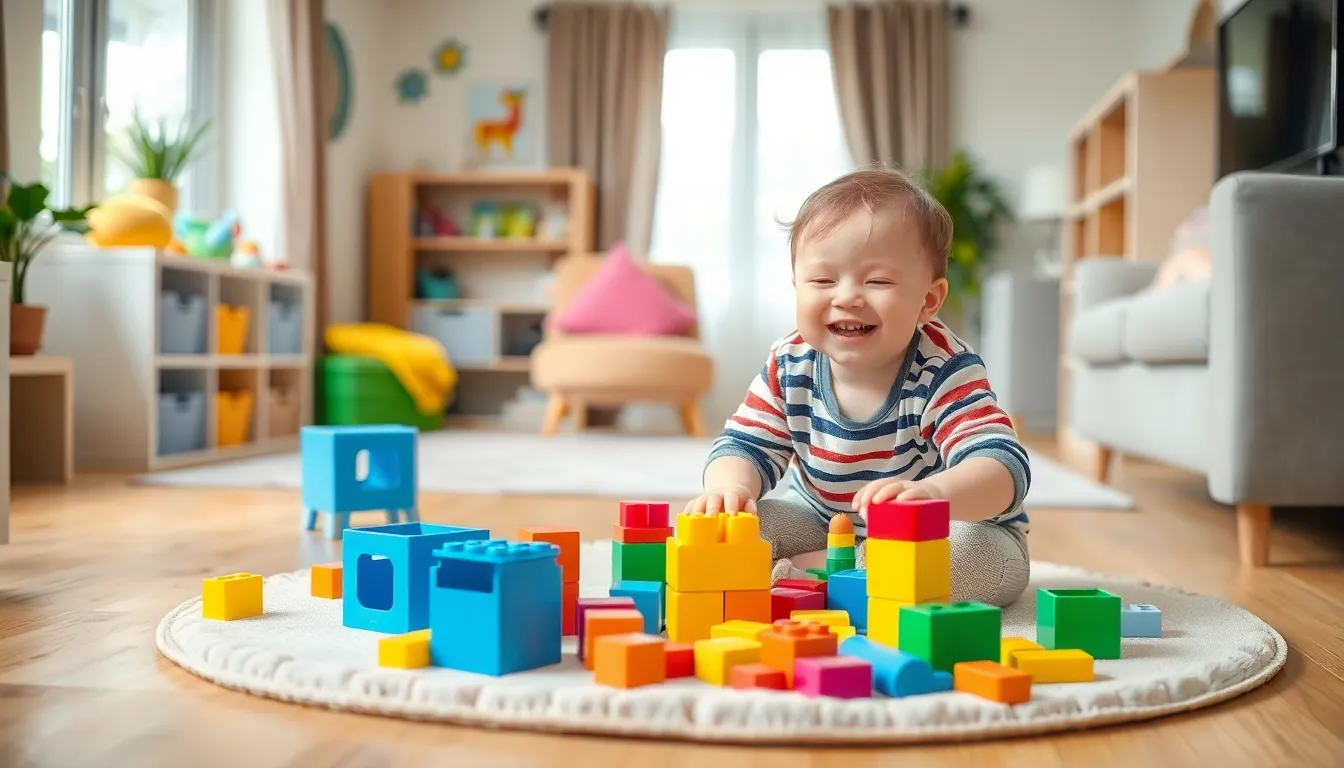
Converting unused living room space into a dedicated play zone transforms dead areas into vibrant hubs where children can explore, learn, and grow safely.
Define Safe Boundaries for Kids
Securing furniture prevents tipping accidents that could injure active children during playtime. We recommend anchoring tall bookcases, entertainment centers, and storage units to walls using furniture straps or brackets. Installing corner protectors on sharp table edges and furniture corners creates a safer environment for toddlers who are still developing coordination skills.
Safety gates effectively block access to stairs, kitchens, or other potentially dangerous areas while allowing visual supervision. Choose pressure-mounted gates for temporary boundaries or hardware-mounted options for permanent installations. Soft play mats or area rugs define exact zones within the larger space, creating clear boundaries that children naturally understand and respect.
Choose Age-Appropriate Furniture and Toys
Kid-sized tables and chairs encourage independence while promoting proper posture during activities like coloring, puzzles, or snack time. Select furniture with rounded edges and sturdy construction that can withstand energetic play sessions. Adjustable height options grow with children, making them cost-effective long-term investments.
Interlocking building blocks, magnetic tiles, and educational puzzles stimulate cognitive development while keeping children engaged for extended periods. We suggest rotating toys weekly to maintain interest and prevent overwhelming the space with too many options. Storage bins with picture labels help children identify where exact toys belong, teaching organizational skills early.
Educational toys that promote problem-solving skills include shape sorters, stacking rings, and age-appropriate board games. These items encourage learning through play while developing fine motor skills and hand-eye coordination essential for school readiness.
Incorporate Easy-to-Clean Storage Answers
Clear plastic containers allow children to see their toys at a peek, reducing frustration and encouraging independent play. Label each container with both words and pictures to support early reading skills while maintaining organization. Stackable bins maximize vertical storage space without overwhelming the room’s aesthetic.
Low-height shelving units enable children to access their belongings independently while keeping frequently used items within easy reach. Open cubbies work better than closed cabinets for young children who benefit from visual reminders of available activities. Rolling carts provide flexible storage that can move between different play areas as needed.
Washable fabric bins handle inevitable spills and messes that come with active play, maintaining hygiene standards without constant replacement costs. Choose storage answers with smooth surfaces that wipe clean easily, avoiding textured materials that trap dirt and germs.
Build an Indoor Garden or Plant Display
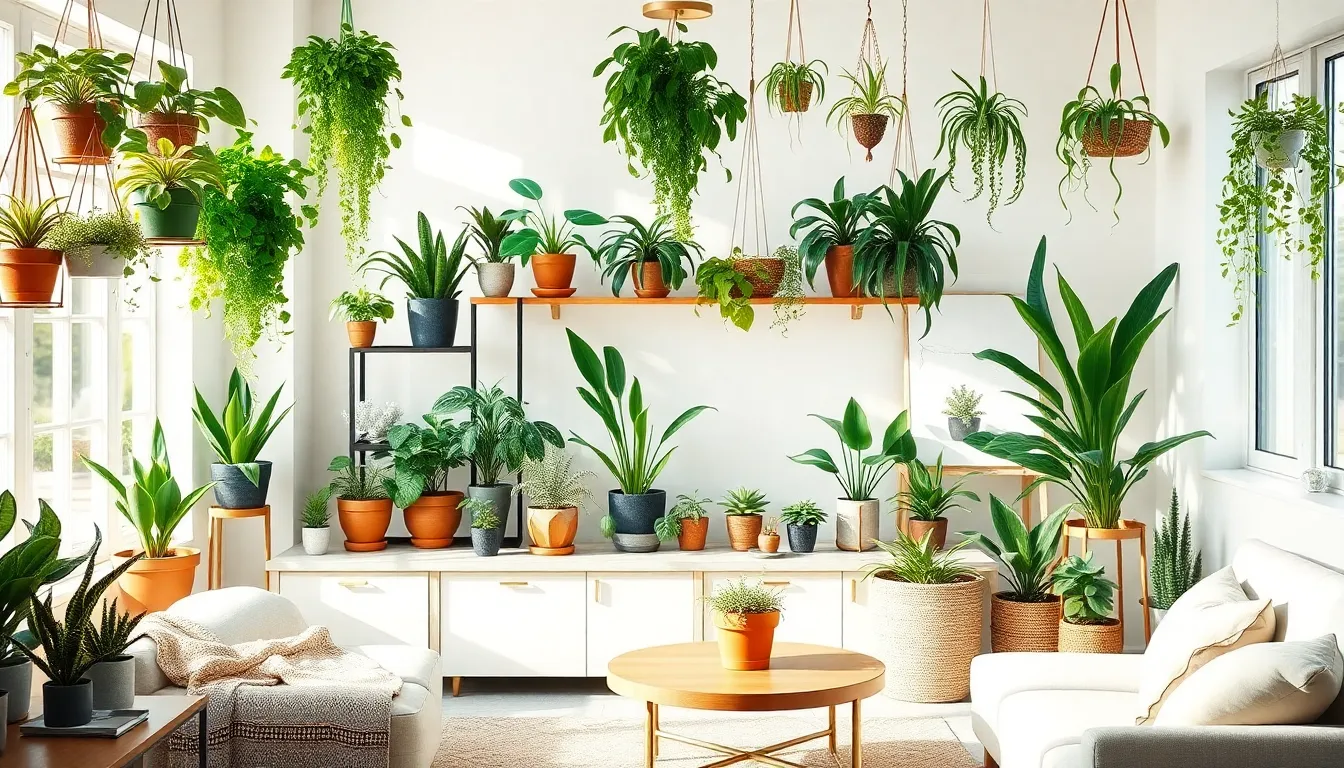
Transforming your unused living room space into a lush indoor garden creates a natural focal point that purifies air and adds vibrant life to your home. We’ll guide you through creating a stunning plant display that thrives with minimal maintenance.
Select Low-Maintenance Indoor Plants
Choose succulents and air plants for effortless care that fits busy lifestyles. These hardy varieties require watering only once or twice weekly and tolerate various light conditions. Popular options include jade plants, aloe vera, and string of pearls for succulents, while air plants like tillandsia and Spanish moss need only weekly misting.
Incorporate snake plants and pothos for reliable greenery that adapts to different room conditions. Snake plants tolerate low light and infrequent watering, making them perfect for corners with limited natural light. Pothos varieties cascade beautifully from elevated surfaces and can grow in water or soil with minimal attention.
Add ZZ plants and peace lilies for dramatic foliage that creates visual impact without demanding care. ZZ plants feature glossy, architectural leaves that remain attractive even when neglected for weeks. Peace lilies produce elegant white blooms and signal their watering needs by drooping slightly when thirsty.
Install Proper Plant Lighting Systems
Position LED grow lights strategically to provide full spectrum illumination for healthy plant growth. These energy efficient fixtures consume 50% less electricity than traditional bulbs while producing the exact wavelengths plants need for photosynthesis. Mount adjustable LED strips under shelves or use standalone grow lamps for flexibility.
Calculate lighting requirements based on plant types to ensure optimal growth conditions. Low light plants need 10-15 watts per square foot, while medium light varieties require 20-30 watts per square foot. High light plants like succulents and flowering species need 30-50 watts per square foot for maximum health.
Set automatic timers for consistent light schedules that mimic natural daylight patterns. Most indoor plants thrive with 12-16 hours of artificial light daily during growing seasons. Timer controlled systems prevent overexposure while ensuring plants receive adequate illumination when natural light is insufficient.
Create Tiered Displays for Visual Interest
Arrange plants at varying heights using plant stands, floating shelves, and hanging planters to create ever-changing vertical gardens. Position taller plants like fiddle leaf figs at floor level, medium plants on stands or tables, and trailing varieties in elevated positions. This layered approach draws the eye upward and maximizes growing space.
Use decorative planters of different sizes to add texture and personality to your plant display. Mix ceramic pots, woven baskets, and modern geometric containers to complement your living room’s existing decor. Group odd numbers of plants in clusters, following the rule of threes for the most visually appealing arrangements.
Install corner plant shelves to transform awkward spaces into stunning green showcases. Ladder style plant stands, corner etageres, and wall mounted floating shelves create multiple levels for plant placement. These vertical answers accommodate various pot sizes while maintaining easy access for watering and maintenance.
Set Up a Mini Home Gym or Exercise Space
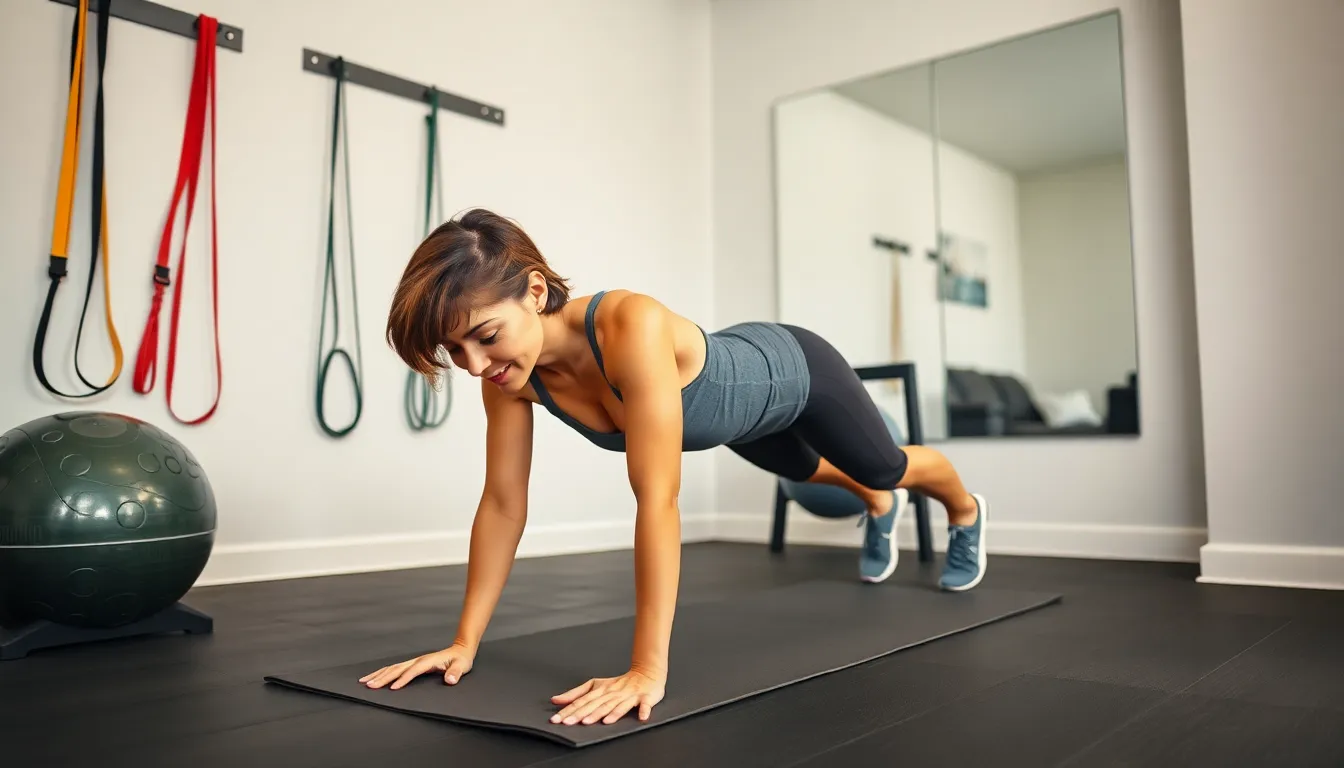
Transforming that empty living room corner into a home gym creates a convenient fitness solution without requiring a separate room. We’ll show you how to maximize your workout potential in minimal square footage.
Choose Space-Saving Workout Equipment
Foldable equipment becomes your best friend when creating a compact home gym in limited living room space. Resistance bands take up virtually no storage space yet provide full-body workout options equivalent to traditional weights. Pull-up bars that mount to doorways or walls offer upper body strengthening without permanent installation requirements.
Wall-mounted systems maximize floor space while keeping equipment accessible for daily workouts. Suspension trainers anchor to walls or ceilings and fold away completely when not in use. Adjustable dumbbells replace entire weight sets with one compact system that fits under furniture or in closets.
Multi-functional pieces serve double duty in living spaces where every square foot matters. Storage ottomans hide yoga mats and resistance bands while providing seating during rest periods. Stability balls function as both exercise equipment and alternative seating options for watching television.
Install Proper Flooring for Exercise
Rubber flooring provides the ideal foundation for home workouts by absorbing impact and reducing noise for downstairs neighbors. Interlocking rubber tiles install easily over existing flooring and remove without damage when you want to change your space layout. These tiles typically cost $2-4 per square foot and withstand heavy equipment use.
Hardwood floors work well for yoga and stretching routines but require protective mats for high-impact exercises. Exercise mats with non-slip backing prevent sliding during workouts while protecting your original flooring from scratches and dents. Thick exercise mats measuring at least 0.5 inches provide adequate cushioning for floor exercises.
Carpet considerations require careful evaluation since most carpets lack the stability needed for weightlifting or high-intensity workouts. Dense, low-pile carpets offer more stability than plush options, but we recommend adding exercise mats for safety and equipment protection.
Add Mirrors to Enhance the Space
Wall mirrors create the illusion of doubled space while serving essential workout functions for form monitoring and motivation. Installing mirrors on one complete wall makes small exercise areas feel significantly larger and brighter. Shatterproof acrylic mirrors provide safety advantages over traditional glass options in active workout environments.
Strategic placement maximizes both aesthetic and functional benefits in your living room gym setup. Position mirrors to reflect natural light sources and create depth in narrow spaces. Corner mirror installations transform awkward angles into ever-changing workout zones that feel more spacious and inviting.
Safety considerations guide mirror selection and installation in active exercise environments. Choose mirrors with rounded corners and secure mounting systems that can withstand vibrations from equipment use. Professional installation ensures proper anchoring to wall studs for long-term stability and safety during energetic workouts.
Create an Art Studio or Craft Corner
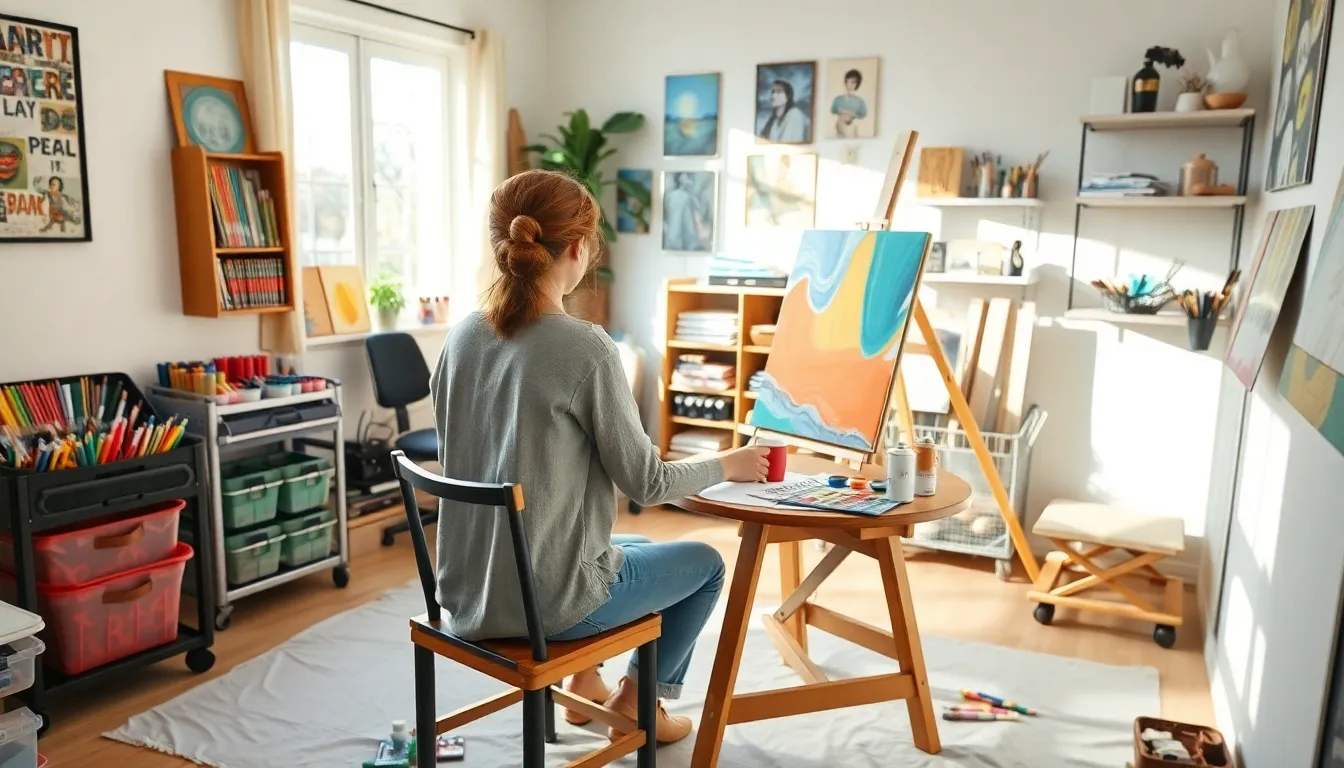
Transforming unused living room space into an art studio offers the perfect solution for unleashing our creative potential while maintaining the room’s aesthetic appeal. We can establish a functional creative workspace without sacrificing the comfort and style of our main living area.
Organize Supplies in Accessible Storage
Storage answers form the backbone of any successful art corner setup. We recommend installing shelves with baskets to keep art supplies organized and easily accessible throughout our creative sessions. Repurposing furniture like old dressers or changing tables provides excellent storage units for larger supplies while maintaining our room’s existing design aesthetic.
Rolling carts offer exceptional mobility for supplies and projects, allowing us to move materials around the room as needed. Vertical storage maximizes our space efficiency by utilizing wall mounted organizers for brushes, pencils, and smaller tools. Clear containers enable quick identification of supplies while keeping everything dust free and properly sorted.
Divided drawer organizers help separate different types of materials like paints, markers, and create tools. We can also install pegboards to hang frequently used items within easy reach of our workspace. Storage ottomans serve dual purposes by providing seating and concealing supplies when the space returns to its primary living room function.
Ensure Adequate Lighting for Detailed Work
Proper lighting eliminates eye strain and ensures color accuracy during detailed artistic work. Natural light from nearby windows provides the most accurate color representation, so we should position our workspace to maximize this benefit during daylight hours.
Task lighting through adjustable desk lamps offers focused illumination for intricate projects and detailed work. LED lights produce minimal heat while providing bright, consistent lighting that won’t fade artwork or cause discomfort during extended creative sessions. Overhead lighting supplements natural and task lighting to eliminate shadows across our work surface.
Adjustable lighting allows us to modify brightness levels based on different project requirements and times of day. We can install under cabinet lighting to illuminate storage areas and ensure we can easily locate supplies. Daylight bulbs maintain consistent color temperature throughout different lighting conditions, ensuring our artwork appears the same under various light sources.
Protect Surfaces with Appropriate Materials
Surface protection preserves our living room furniture and flooring from paint splatters, glue spills, and other artistic mishaps. Drop cloths provide comprehensive coverage for larger floor areas while remaining easy to clean and store between creative sessions.
Plastic sheets offer waterproof protection for tables and work surfaces, preventing permanent damage from liquid mediums. Glass cutting mats create smooth, easy to clean work surfaces that protect underlying furniture while providing precise cutting capabilities. Protective table pads maintain our furniture’s appearance while creating dedicated workspace boundaries.
Washable placemats work perfectly for smaller projects and can be easily cleaned in our washing machine. We can use wax paper for temporary protection during quick crafting sessions. Vinyl tablecloths provide durable, wipeable surfaces that withstand repeated use while complementing our room’s color scheme.
Newspaper layers offer disposable protection for messy projects, while kraft paper provides clean, replaceable work surfaces. Floor mats with raised edges contain spills and prevent tracking art materials throughout our living space.
Design a Bar Cart or Entertainment Station

Converting your unused living room space into a sophisticated bar cart or entertainment station creates an elegant focal point for hosting guests. This setup combines style with functionality while maximizing your available square footage.
Stock Essential Barware and Glasses
Quality barware forms the foundation of any successful entertainment station. We recommend starting with versatile pieces that serve multiple purposes and accommodate various beverages.
Essential glasses include:
- Wine glasses (both red and white wine options)
- Cocktail glasses (martini, coupe, and rocks glasses)
- Beer glasses (pilsner and pint styles)
- Champagne flutes for special occasions
Must-have barware consists of:
- Cocktail shakers for mixing drinks efficiently
- Jiggers for precise measurements
- Muddlers for crushing herbs and fruits
- Bar spoons for stirring cocktails
- Strainers to achieve smooth pours
Choose pieces that match your living room’s aesthetic while prioritizing functionality over quantity. Stainless steel tools offer durability and easy maintenance for frequent entertaining.
Create Attractive Display Areas
Strategic display arrangements transform your bar cart into an eye-catching design element. Visual appeal matters just as much as functionality when integrating this station into your living space.
Display techniques that work include:
- Decorative trays to group bottles and create organized zones
- Wine racks for horizontal bottle storage
- Tiered stands to showcase different bottle heights
- Champagne buckets as both storage and decorative elements
Arrange bottles by color and height to create visual balance throughout your display. Clear glass decanters add sophistication while keeping frequently used spirits easily accessible.
Add personality through decorative elements like vintage bottle openers, elegant cocktail napkins, or small plants that complement your room’s color scheme. These touches make the station feel intentional rather than purely functional.
Include Storage for Entertainment Accessories
Smart storage answers keep your entertainment station organized while maintaining its polished appearance. Hidden storage prevents clutter from overwhelming your living room’s clean aesthetic.
Storage options we recommend:
- Built-in drawers for coasters, napkins, and bottle openers
- Lower shelving for backup bottles and mixers
- Side compartments for storing specialty tools
- Small refrigeration units for keeping mixers and garnishes fresh
Consider adding a compact wine fridge beneath your bar cart to maintain optimal temperatures for both red and white wines. This addition elevates your setup from casual to professional level entertaining.
Keep frequently used items within arm’s reach while storing seasonal or specialty pieces in deeper storage areas. Label storage compartments to maintain organization even when hosting larger gatherings.
Establish a Meditation or Wellness Space

Converting that forgotten corner or empty wall area into a dedicated meditation or wellness space creates a peaceful sanctuary within your living room. This transformation allows you to prioritize mental health and relaxation without requiring an entire separate room.
Choose Calming Colors and Textures
Select soothing color palettes that instantly reduce stress levels and promote inner peace. Soft blues, gentle greens, warm beiges, and neutral grays work exceptionally well for meditation spaces because they create a sense of tranquility. Paint one accent wall in these calming tones to define the wellness area without overwhelming your existing living room decor.
Incorporate varied textures through fabrics and materials that invite touch and comfort. Linen curtains, bamboo blinds, jute rugs, and cotton throws add tactile elements that enhance the sensory experience. These natural textures complement the peaceful atmosphere while maintaining visual interest throughout the space.
Add Comfortable Floor Cushions or Mats
Position meditation cushions or yoga mats strategically to create flexible seating arrangements for different wellness activities. Floor cushions, meditation pillows, and bolsters allow you to sit comfortably during extended meditation sessions while promoting proper posture. Choose cushions with removable, washable covers to maintain cleanliness and hygiene in your wellness space.
Create varying height levels using different cushion sizes and meditation benches to accommodate family members of all ages. Stackable floor cushions offer versatility for both individual practice and group meditation sessions. Store these items in attractive baskets or ottoman storage when not in use to maintain the living room’s overall aesthetic.
Incorporate Natural Elements for Tranquility
Introduce live plants like peace lilies, snake plants, or pothos to purify the air and create a connection with nature. These low maintenance plants thrive in various lighting conditions and contribute to the wellness atmosphere through their natural beauty and air cleaning properties.
Add a small water feature such as a tabletop fountain or essential oil diffuser to incorporate soothing sounds and aromatherapy benefits. Natural materials like wooden meditation bowls, stone sculptures, or crystals serve as focal points for mindfulness practice. Position these elements at eye level when seated to create natural meditation anchors that enhance concentration and peaceful energy flow.
Convert Space Into a Guest Sleeping Area
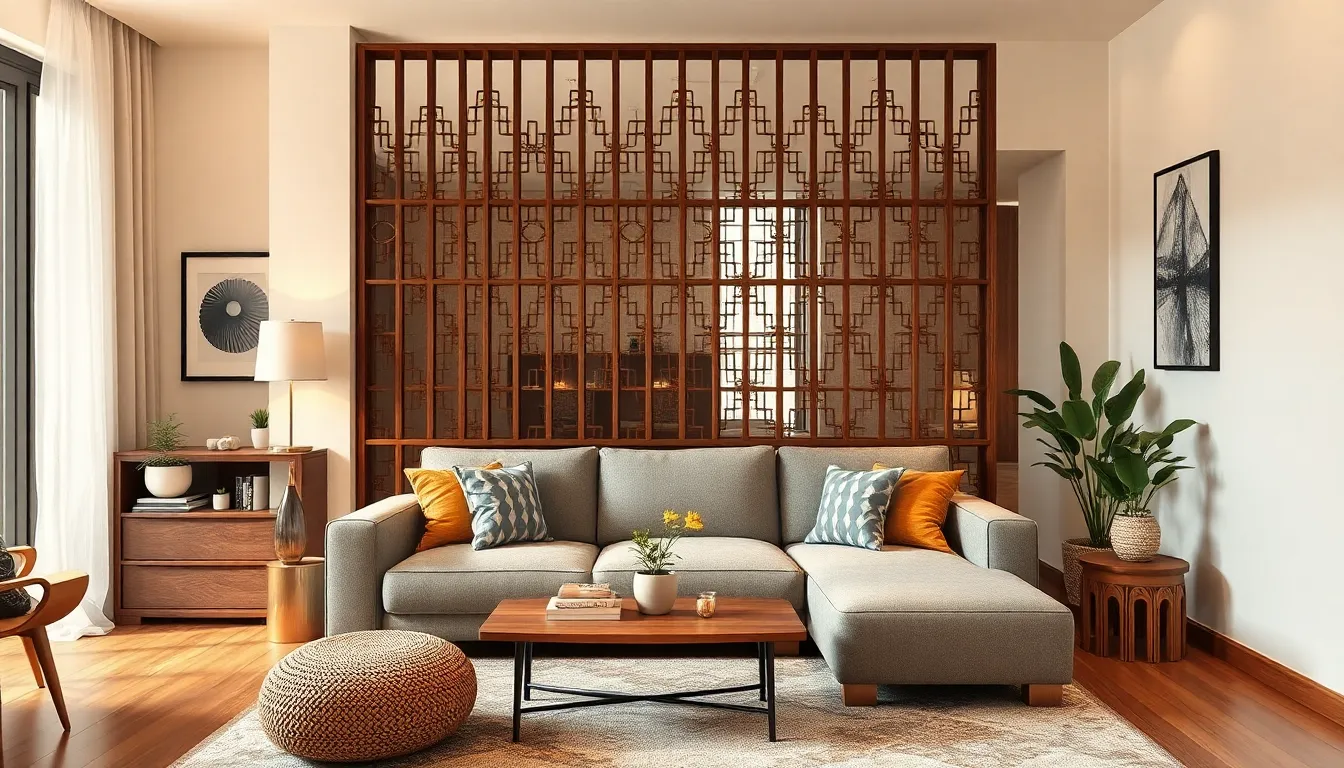
We can transform unused living room space into a comfortable guest sleeping area that serves dual purposes without compromising our home’s aesthetic appeal. This solution maximizes our living room’s potential while providing visitors with a welcoming place to rest.
Select Space-Saving Sleep Answers
Sleeper sofas offer the most versatile option for converting living room space into guest accommodations. These dual-purpose pieces function as comfortable seating during the day and transform into full beds at night. We recommend choosing models with high-quality mattresses and sturdy frames that can withstand regular use.
Murphy beds provide an excellent space-saving solution by folding up against the wall when not needed. These beds completely disappear from view during the day, allowing us to maintain our living room’s original function. Modern Murphy bed designs integrate seamlessly with existing decor and often include built-in shelving or desk components.
Platform beds with storage maximize functionality by incorporating built-in storage compartments beneath the sleeping surface. These beds keep linens, pillows, and guest essentials organized while providing a comfortable sleeping area. We can select low-profile designs that don’t overwhelm smaller living spaces.
Folding beds serve as another practical option for occasional guest visits. These portable answers store compactly in closets or behind furniture when not in use. Quality folding beds now feature comfortable mattresses and sturdy frames that rival traditional bed comfort.
Provide Privacy Options for Guests
Room dividers create instant privacy by sectioning off the sleeping area from the main living space. We can choose decorative screens that complement our existing decor while providing guests with a sense of personal space. Folding dividers offer flexibility to adjust the separation based on our needs.
Curtains or screens provide an affordable privacy solution that we can install temporarily or permanently. Ceiling-mounted curtain tracks allow us to draw curtains around the sleeping area when guests arrive and hide them completely when not needed. We recommend selecting curtains that match our living room’s color scheme for a cohesive look.
Strategic furniture placement helps create natural privacy barriers without additional installations. We can position bookcases, tall plants, or existing furniture to shield the sleeping area from main foot traffic. This approach maintains an open feel while providing guests with visual privacy.
Include Storage for Bedding and Personal Items
Storage ottomans serve multiple functions by providing seating, footrests, and hidden storage for guest bedding. We can place these versatile pieces throughout our living room to store pillows, sheets, and blankets within easy reach. Many storage ottomans feature removable tops for quick access to stored items.
Underbed storage utilizes the space beneath beds or sofas for organizing guest essentials. Rolling storage bins allow us to quickly access linens and personal items while keeping them dust-free and organized. We recommend clear containers to easily identify contents without opening each bin.
Wall-mounted storage maximizes vertical space without cluttering floor areas. Floating shelves can hold folded linens, while wall hooks provide convenient spots for guests to hang clothing or personal items. We can install these storage answers at heights that don’t interfere with daily living room activities.
Closet organizers transform existing closet space into efficient guest storage areas. We can install shelving systems, hanging organizers, and drawer units to accommodate guest clothing and accessories. This dedicated storage helps guests feel more at home while keeping their belongings organized and accessible.
Conclusion
Your living room’s unused spaces hold incredible potential waiting to be unlocked. We’ve shown you how to transform every forgotten corner and empty wall into something extraordinary that serves your lifestyle.
Whether you’re craving a peaceful reading retreat or need a productive workspace these creative answers prove that no space is too small to make a difference. From indoor gardens to guest sleeping areas each idea we’ve shared maximizes both function and style.
The key is choosing answers that reflect your personal needs while maintaining your room’s overall aesthetic. Start with one area and gradually expand your vision as you discover what works best for your home.
Take action today and transform those underutilized spaces into the functional beautiful areas you’ve always wanted. Your living room—and your daily life—will thank you for it.
Frequently Asked Questions
What are some creative ways to use empty corners in my living room?
Transform empty corners into functional spaces like cozy reading nooks with comfortable seating and proper lighting, mini home offices with compact desks, indoor gardens with tiered plant displays, or meditation spaces with floor cushions and calming elements. These solutions maximize your living space while adding both style and functionality.
How can I create a reading nook without major renovations?
Choose comfortable corner seating like plush armchairs or oversized floor cushions, add proper lighting with floor or table lamps, and incorporate storage solutions such as floating shelves or corner bookcases. This creates a dedicated reading space that enhances your room’s functionality without expensive renovations.
What storage solutions work best for small living room spaces?
Utilize vertical space with floating shelves at varying heights, install built-in cabinets for concealed storage, use storage ottomans that double as seating, and consider wall-mounted desks that fold down when not in use. These solutions maximize storage while maintaining your room’s aesthetic appeal.
How do I set up a home office in my living room?
Position a compact desk in a corner or against a wall to maximize floor space, choose adjustable sitting/standing desks for comfort, use room dividers to separate the work area, and install hanging storage solutions to keep supplies organized yet hidden from view.
What plants are best for indoor living room displays?
Select low-maintenance plants like succulents, air plants, snake plants, and pothos that thrive in various light conditions. These plants require minimal care while adding natural beauty to your space. Consider your room’s lighting and choose plants accordingly for best results.
How can I create a mini gym in my living room?
Use space-saving equipment like foldable items and wall-mounted systems, install proper flooring such as rubber mats for impact absorption, add mirrors to create the illusion of larger space, and ensure adequate ventilation. This creates a convenient workout area without dedicating an entire room.
What’s the best way to convert living room space for guests?
Invest in space-saving sleep solutions like sleeper sofas, Murphy beds, or folding beds that maintain your room’s aesthetic. Provide privacy with room dividers or curtains, and include storage solutions like ottomans or underbed storage for bedding and guests’ personal items.
How do I maintain my living room’s style while adding functionality?
Choose furniture and accessories that complement your existing decor, use room dividers that enhance rather than clash with your aesthetic, select storage solutions that blend seamlessly with your design, and maintain a cohesive color scheme throughout all additions to your space.
